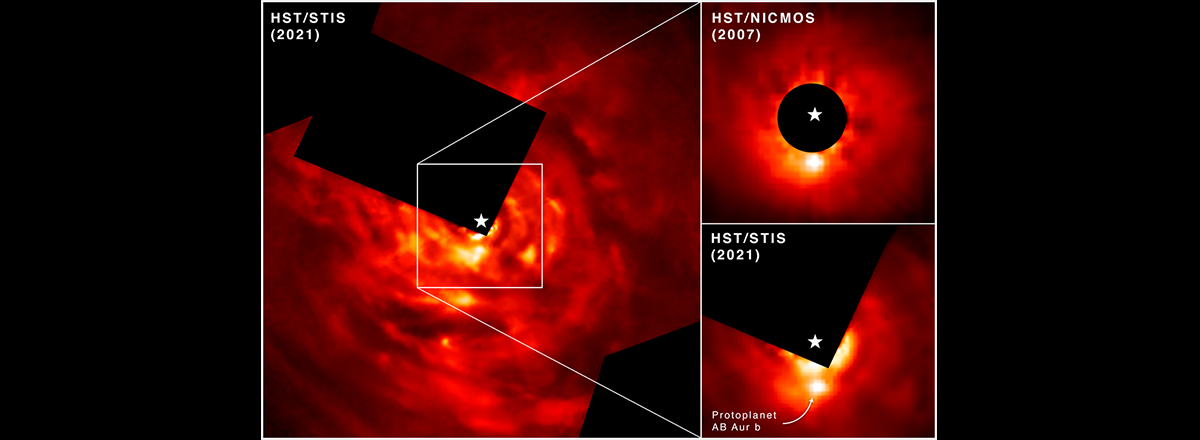Hubble Took a Picture of a Forming Jupiter-Like Protoplanet
The newborn planet orbits the protostar AB Aurigae. The planet is a gas giant whose mass is nine times that of Jupiter. The exoplanet orbits at a distance of 8.6 billion miles from its parent star.

Astronomers have captured the cradle of the emerging protoplanet AB Aurigae b, which resembles Jupiter, using the Hubble Space Telescope. The images support the theory that such objects form due to disk instability.
The newborn planet orbits the protostar AB Aurigae. The planet is a gas giant whose mass is nine times that of Jupiter. The exoplanet orbits at a distance of 8.6 billion miles from its parent star.
According to the generally accepted model, gas giants resembling Jupiter are formed as a result of so-called core accretion. This means that an exoplanet begins its life as a stony core, which then gradually accumulates gas from the protoplanetary disk.
AB Aurigae b does not fit this theory. It is still just forming, and astronomers think it's all about another mechanism called disk instability. This is a process in which a massive gaseous protoplanetary disk disintegrates into one or more collapsing planetary-mass fragments as it cools, forming gas giants.

